Credits are important to programme-makers but of limited interest to audiences. The ±«Óătv's credit policy balances the desire to reflect significant creative contributions with the reality that lengthy credits make viewers switch off. It's also important that the editorial use of credits across ±«Óătv output is consistent.
Guidance must be followed to maintain the strength of the ±«Óătv brand and ensure consistency among all producers of programmes for the ±«Óătv.
Please note, The Department for Culture Media and Sport (DCMS) scheme credit requirement does not apply to ±«Óătv commissions, and should not be included in the programme delivered to the ±«Óătv.
Productions granted permission from the ±«Óătv to deliver non-standard end credits should ensure that this information is noted in both the âVideo Commentsâ field in the programme file metadata and the eyeball report when they submit the final programme file. Find out more about file delivery.
Credits should be based solely on the following principles:
- Credits should accurately reflect significant creative contributions specific to the programme.
- Credits must not be given in return for any payment, reduced fee, benefit or any other advantage.
- Credits which imply that certain jobs are the preserve of one gender only must not be used. (The exception is Best Boy).
- To ensure that credits are legible on-screen individual letters should not be less than 40 pixels in height.
- End credits must be between 25 â 30 seconds.
- Only Live Sport and Entertainment shows, where credits can be shorter, are allowed horizontal credit scrollers but these should still adhere to the new format and duration guidance.
- Children's programmes where they should be 20 seconds and have a specific layout.
- If end credits run over visually interesting graphics or live action these should not be editorially critical to the integrity of the programme or include speech as they may be processed to accommodate promotional messages.
- End Credits should be justified to the centre and must be either cards or a vertical scroller.
- End credits should run over visually interesting graphics or live action, but this should not be editorially critical to the integrity of the programme or include speech (including production-made trails or helpline information) as they may be shrunk or re-formatted to accommodate promotional messages.
- Credits need to conform to the .
Credits A-Z guide
Acquired programmes: for single Documentaries, animation or filmed music product the credits and captions must be compliant with this guidance. For feature films and acquired series, it is understood that at the point of delivery the credits may well not be compliant to ±«Óătv specification in terms of duration or graphic safe areas.
Archive credits: archive suppliers may be credited for their Significant Creative Contribution (see below) if the credit is approved by the ±«Óătv executive producer/commissioning executive. In considering approval of an archive supplier credit the following criteria will be used to assess significance of the creative contribution:
- editorial importance
- exclusivity
- duration/volume
- additional support
- contractual requirements
Where an archive house has provided additional support that has involved a significant creative contribution, for example archive research, a credit may be given to an individual or to the archive supplier but not to both.
Charity references: references must not be made in end credits to charities without prior referral to Editorial Policy.
Choice of credits: to keep lists short credits should be generic where possible eg when several people have carried out allied production roles the credit Production Team may be appropriate. See also 'Multiple names under one credit' below.
Copyright line: the copyright line should be on the final card. Download .
Credit documentation: Productions granted permission from the ±«Óătv to deliver non-standard end credits should ensure that this information is noted in both the âVideo Commentsâ field in the programme file metadata and the eyeball report when they submit the final programme file. Find out more about file delivery.
Credit groups: credits are grouped in these guidance under overall headings, eg performers, crafts. This arrangement makes it easier to find the right credit. See closing credits information. Credits not listed should not be used without prior referral.
Exceptional circumstances: in exceptional circumstances we may be required contractually to give credits on some co- productions, for performers and Writers in specific productions and under the Copyright Designs and Patents Act 1988. In every other case producers exercise their discretion in accordance with the principles of crediting. The ±«Óătv will try - but cannot guarantee - to transmit all agreed credits. There may be times when we have to cut or drop them without warning.
Final cards: see the final card requirements in the branding for independent productions section.
Foreign broadcasters: foreign broadcasting organisations which supply or relay programmes to ±«Óătv Television may, at our discretion, receive an end credit which should appear before the final card, thus:
- For national broadcasters the country and the channel eg Presentation by TF1 France
- for regional or local broadcasters the city or town together with the company eg NDR Hamburg
- a general acknowledgment is occasionally appropriate when several national services co-operate, eg a German Television Presentation.
This should usually be agreed at commission/contract stage. If not, then production teams should consult with the contract lawyer and central.marketing@bbc.co.uk.
Grammar and spelling: credits and captions should be checked for spelling or grammatical mistakes. Typical pitfalls to avoid are misplaced apostrophes and lower case letters for names or the beginnings of sentences. See also Name style below.
Helplines/Action lines: information about Helplines or Action Lines and other public service support material should not be included in end credits. Productions requiring a Helpline/Action Line should include this information in the body of the programme. If this is impractical, production should contact Media Planning to arrange for the information to be presented over the end credits during playout using the credit squeeze process. Programme makers may contact Audrey McCallum at Capita to book a Helpline or Action Line. Find out more about Helplines and Action lines on the Production resources page.
Honours and qualifications: honours, titles, decorations, and professional or academic qualifications should not normally be included in credits (or captions) unless they are relevant to the circumstances in which the person appears. See also Name style below.
Independent production companies: the ±«Óătv's contracts with independent production companies give us the final say on credits. The ±«Óătv requires all independent productions' credit proposals to meet the terms of this guidance. Any queries or exceptions should be referred to the ±«Óătv executive producer for the relevant programme.
Locations: if a production judges that it would be of interest to the audience to know the name of a location used in a programme (and it is not apparent from the programme itself) it may be identified in end credits. Such references cannot be given in exchange for a waived or a reduced facility fee or for any other benefit or advantage. Where a location is given the name must appear in the same style as the rest of the credit sequence. Location owners' names, logos or house colours cannot be used.
Multiple names under one credit: where two or more people have contributed to work covered by a single credit. eg costume, the relative contributions should be reflected by different type sizes. For example, a senior role would appear in larger type than a junior one. See also Choice of credits.
Music: there may be times when a production judges that it would be of interest to the audience to know the name of a piece of music used in a programme. A reference in the credits must be non-promotional and must be limited to the title of the piece and either the composer or the performer, not both.
Name style: generally people's names should appear in credits (and captions) in the style their owners prefer. See also Honours and qualifications.
News programmes: there should be no credits for news bulletins or nations and regions News magazines.
One person with multiple roles: no individual should normally be named in a credit list more than once. Where someone has fulfilled more than one credit-worthy function he/she may be credited for both (if more than two functions they must choose just two which most reflected their contribution) in a single credit line, provided the roles are significantly different from each other eg "Written and Produced by". In all other circumstances proposals to credit someone more than once must be referred before a commitment is made. See also Referrals.
Opening titles and credits: there should be no opening credits other than those listed under opening credits. On C±«Óătv, credits for key talent and Writers should always be over action. Where feasible (eg in Dramas) key talent, Writers and senior editorial/production staff should be credited in the opening sequence instead of the end credits. Opening credits should not be repeated in closing credit sequences except credits for performers.
Order of credits: given the diversity of programmes there can be no firm rule about the order in which credits are listed. However, the aim should be to run them in a logical sequence starting, where appropriate, with the names of performers or contributors and ending with the name of the person responsible for the production.
Position of credits and end credit promotions: please see the correct position for all end credits in the credit positioning section for details about pre-recorded programmes for ±«Óătv One, Two, Three and Four, C±«Óătv and CBeebies.
Post-credit sequences: post-credit sequences (ie live action sequences which appear after the credits have been run) are not permitted without approval from the relevant commissioning Head.
Promotions over end credits: preview trails edited by production into end credits (eg "Next week...") are not permitted. If productions wish to trail the next in the series this should be done before the end credits.
Readability: to ensure that credits are legible on-screen consideration must be given to typefaces, graphic style (including contrast with any background used) and roller speed. Please note the type size guidance on the credit positioning section. Individual letters in credits should not be less that 40 pixels in height.
Re-caps: on C±«Óătv, Drama series/continuing narrative programmes should include re-caps pre-title.
Referrals and advice: referrals should be made where indicated. For further advice consult the ±«Óătv executive producer or the following:
- Branding queries - central.marketing@bbc.co.uk
- Editorial Policy Queries - 0208 00 81819
Significant creative contribution: to ensure we recognize those with the greatest creative contribution to a specific programme we must be consistent about our definitions of what this category includes and excludes:
- Only credit those who have contributed directly to the programme. This does not include overarching managerial roles in companies or departments eg heads of production, production executives, creative heads, head of development, head of department, company director.
- Do not include suppliers who have provided a resource/service for which we have paid a fee and for which there was no creative value added by the company. This is a commercial transaction rather than a creative one. See Suppliers below. Any exceptions to this require previous agreement with the ±«Óătv executive producers.
Suppliers and facilities: it is not permissible to credit suppliers and facilities who are providing their products or services for a fee and not adding a creative or production role. This is a commercial transaction and a procurement relationship rather than a creative one. Any exceptions to this require previous agreement with the ±«Óătv executive producer. It is possible to credit facilities such as post-production houses, where it is clear that a significant creative contribution has been made. Such credits may include the name(s) of the individual(s) or the name of the organisation, but not both. Under no circumstances can credits be given in exchange for a waived or a reduced fee or for any other benefit or advantage. No exceptions to this can be considered.
Sponsored events: where it is appropriate to identify an event sponsor in the end credits the name should appear in the same style as the credits themselves. Event sponsors' logos or house colours cannot be used. All proposed credits for event sponsors must be referred before commitments are made.
Theatrical organisations: credits should not be given to theatrical organisations whose performers appear in television programmes unless required contractually. Where this occurs the inclusion of a credit must be referred and agreed in advance. Typical wording is "Beverley Smith appears by permission of XYZ theatre company".
Third party commitments: the ±«Óătv person responsible for a production must tell anyone who makes a programme for or in association with the ±«Óătv that they should not make crediting commitments to third parties, eg Contributors and Co-producers, without checking first with the ±«Óătv that any proposed credit is permissible.
Tribute credits: credits such as "This programme is in memory of X" are not permissible without referral in advance.
Use of animals: where animals are used in productions in a way which may give the mistaken impression they have been harmed it is often wise to include a reassuring caption in the end credits. Typical options are "The programme-makers/producers would like to give an assurance that no animals were harmed in the filming/making of this programme/episode". An explanation of this type is likely to avert complaints from viewers.
URLs in credits and the body of a programme: promotional URLs must not include the "www." when they appear on-screen and must always appear "bbc.co.uk/" This address gives access to the home page of the corresponding ±«Óătv web site which in turn offers access to programme information and any e-mail facility. Only ±«Óătv URLs and email addresses may be used. These may be used by ±«Óătv Studios and independent productions. The URL should be placed on the endboard below the copyright notice. No reference to any commercial site (including the ±«Óătv's) or non ±«Óătv email addresses is permitted. On C±«Óătv where a programme is included on the C±«Óătv website then the URL which should appear is bbc.co.uk/cbbc.
Varying credits in a series: in a series, it may not always be necessary to include every credit-worthy individual in each programme. Depending on what people have contributed it may be more appropriate, for example in a six-parter, to credit some individuals in programmes one, three and six only and others in the remainder only.
Website guidance: the ±«Óătv is trying to focus the number of calls to action it gives its audience to ensure messages that are communicated are impactful and of direct benefit to the audience. Only those programmes that have a specific website commission should include a programme URL in their end credits. This should appear as bbc.co.uk/sitename eg bbc.co.uk/doctorwho. If there is no associated web commission for a programme then end credits should remain clean of any URL.
With thanks to: this section is the reserve of individuals or organisations who have gone above and beyond the call of duty in helping the programme makers and without whom the programme could not have been made. It should not include on-screen Contributors, suppliers or fixers. Inclusion of such a credit must be separate from any financial negotiation or contractual arrangements.
Credit categories
The following download details what categories may be used in opening and closing credits. Programme-makers may choose from the two credit lists detailed here only.
Download the .
Further information about credits for ±«Óătv Studios productions can be found on ±«Óătv Gateway.
Credit durations
Opening credit durations
Opening credit sequences for programmes for ±«Óătv Three must not exceed 10 seconds. This should be taken into account when commissioning any music or graphic intended to accompany them.
End credit durations
End credit sequences must not exceed the following durations, which should be taken into account when commissioning any accompanying music or graphic:
| Channel | Slot Duration | Maximum Credit Duration |
|
±«Óătv One |
All Durations | 25 to 30 seconds |
| CBeebies, C±«Óătv Channel | All durations | 20 seconds |
They may be longer for first and last editions provided they do not exceed the programme duration guidelines. This must be agreed in advance with the Commissioning Editor.
These durations are not targets to be achieved, but maximum durations which must not be exceeded. There may be occasions when the credits can be shorter, bearing in mind the need to ensure credits are fully legible. There may even be occasions when credits are not necessary.
Download .
Credit positioning
These guidelines do not apply to children's, sport and live entertainment shows.
If end credits run over visually interesting graphics or live action these should not be editorially critical to the integrity of the programme or include speech (including production-made trails or helpline information) as they may be re-formatted to accommodate promotional messages.
Programme trails, solicits or helplines edited by production into their end credits are no longer allowed and should wherever possible be accommodated within the programme.
End credits should be delivered justified to the centre and be no wider than the 4:3 caption safe area. They must not be justified left, justified right or be horizontal scrollers. They may be either cards or a vertical scroller.
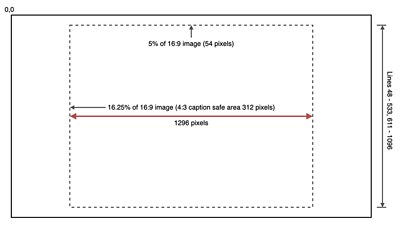
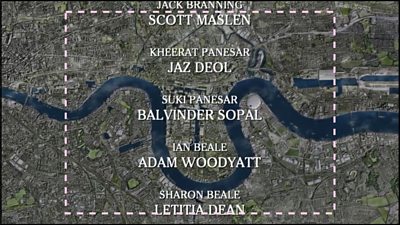
The end credits sequence will slide to the left with no size change. It is therefore essential that all text fits within the 4:3 caption safe area. All programmes return to full screen for the closing end board.
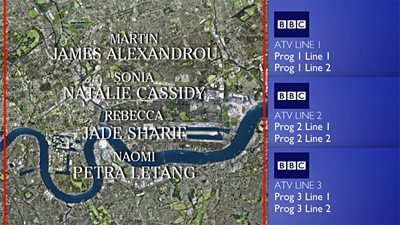
End credits may be in any typeface but where possible should not be less than 40 pixels in HD and not less than 20 pixels in SD. This is to guarantee legibility of the end credits.
Please note that different requirements may apply for Children's programmes, please see the Children's sections below.
±«Óătv Reith font
Download the ±«Óătv Reith font on the ±«Óătv Branding website.
On screen restrictions/DOG
Avoid having captions, graphics or written words in the top left or right of screen as these may clash with the Digitally Originated Graphic (DOG) or with the âPress Redâ flag or service option tags for interactive services.
- On ±«Óătv Three and ±«Óătv Four there will be at least one DOG on screen throughout the transmission of the show (with the exception of movies and performance on ±«Óătv Four and only in exceptional circumstances on ±«Óătv Three)
- On ±«Óătv Three (in special circumstances such as a theme night) an extra event specific DOG may be generated. They will be placed in the top left of screen under the ±«Óătv Three DOG on the edge of the 4x3 safe action area.
- âPress Redâ and interactive service option tags may appear top-right of screen.

Albert logo
Programmes entitled to display the Albert logo must display the static logo as part of the end-card design. The Albert logo must appear at the extreme bottom left of the 16:9 caption safe area and must not be more than 150% of the height of the ±«Óătv blocks.
Branding for independent production companies
Download the which must be used in accordance with the .
Opening branding
There can be no opening branding.
Closing branding
In addition to the requirements for network and non-network programmes an independent production company may be identified only by:
- its symbol
- or its name
- or its symbol and name
Where the above criteria are met the identification must appear as part of the final card together with the words âfor ±«Óătvâ in the corporate typeface (Gill Sans regular) and the static ±«Óătv corporate logo and must:
- occupy no more than 10% of a 4 Ă 3 screen format, irrespective of whether or not it is a widescreen production.
- appear over the same background as the programme's other credits or over black.
- Logos must be static and mute.
- have the end card held for three seconds as part of the total programme duration. It should then be held for a further 10 seconds as a precautionary measure.
±«Óătv logo
The ±«Óătv logo must:
- Be static and either cut or mix on
- Be white or black only
- Be centred wherever possible
- Appear over the same background as the programme other credits, or over black,
- Not use dropped shadow
- Be no less than 72 pixels in height (maximum height must not exceed 84 pixels)
- Have square blocks

Further guidelines for independent productions
Download information about .
Download the ±«Óătv Reith font from the ±«Óătv Branding website.
Please note that different requirements apply for Children's programmes, please see the Children's sections below.
Branding for strands
Download the including Arena, Horizon, Storyville and Writersroom. This must be used in accordance with the .
Branding for ±«Óătv Studios
±«Óătv Studios staff can find relevant branding information on Gateway. Non ±«Óătv Studios staff or those unable to access Gateway should contact their respective producer for more information or with any other query.
Branding for ±«Óătv in-house (non Studios)
±«Óătv in-house staff should contact their respective producer for branding information or with any other query.
Branding for co-commissions
which must be used in accordance with the .
This section explains the closing sequence requirements for programmes made as co- commissions between two independent production companies.
An independent production company may be identified by:
- Its logo
- OR its name
- OR its logo and name, where both are a combined single symbol
Where the above criteria are met, identification must appear (for each company) only as part of the final card together with the words âfor ±«Óătvâ in the corporate typeface (Gill Sans regular) and ±«Óătv corporate logo. Each company identification must:
- Occupy no more than 10% of a 4 x 3 screen format, irrespective of whether or not it is a widescreen production. See credit positioning section above.
- Appear over the same background as the programme's other credits, or over black.
- Logos must be static and mute.
±«Óătv logo
The ±«Óătv logo must:
- Be static and either cut or mix on
- Be white or black only
- Be centred wherever possible
- Appear over the same background as the programme other credits, or over black
- Not use dropped shadow
- Be no less than 72 pixels in height (maximum height must not exceed 84 pixels)
- Have square blocks
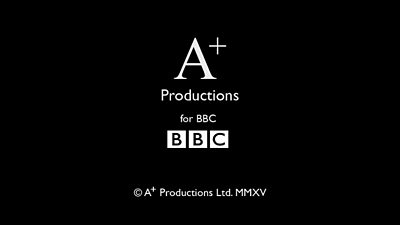
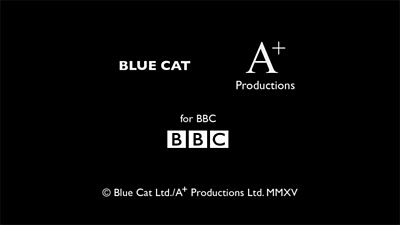
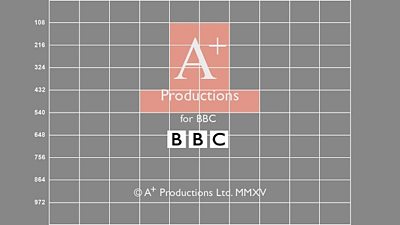
For co-commissions between two independent production companies within strands (ie imagine...) the independent company identification and accompanying ±«Óătv logo should be on the penultimate card.
Please note that different requirements apply for Children's programmes, please see the Children's sections below.
Branding for CBeebies and C±«Óătv independents
Download (dropbox) for editors and graphic designers. Please note users must have Adobe Photoshop CS6 software or later to access full package and must be used in accordance with the .
Caption safe area
The opening ±«Óătv logo and any captions within a programme must appear within the 16:9 caption safe area. The percentages shown are percentages of the 16:9 screen size.
Closing branding
C±«Óătv and CBeebies prefer closing credit sequences, this is where the credits run over the top of action in vision. If this is not appropriate for a particular show, closing credits should be centred within 4:3 caption safe area over an interesting background but not over plain black. All programmes will comply to the standard delivery documentation as outlined in the (dropbox).
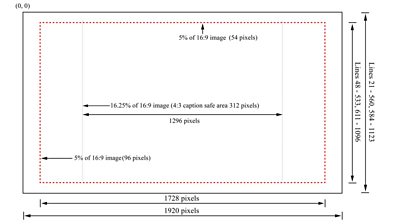
|
Caption safe area |
Defined as (%) |
HD pixels (inclusive) First pixel numbered 1 |
TV line numbers (inclusive) Numbering as per âITU-R BT.709â |
|
16:9 caption safe |
90% of active width 90 % of active height |
96 â 1823 54 â 1025 |
48 to 533 (F1) and 611 to 1096 (F2) |
|
4:3 caption safe |
67.5% of active width 90 % of active height |
312 â 1607 54 â 1025 |
48 to 533 (F1) and 611 to 1096 (F2) |
The primary C±«Óătv logo must appear on the end-card for C±«Óătv programmes and the CBeebies logo must appear on the end-card for CBeebies programmes. The end-card must have âCBeebies Productionâ/âC±«Óătv Productionâ between the logo and the date copyright.
The end-card should be held for three seconds as part of your total programme duration. It should then be held for a further five seconds as a precautionary measure.
Producer or other credit should be centred horizontally above the logo.
Logos
C±«Óătv and CBeebies logos:
- must be centred at all times on the end-card
- must appear at a minimum size
- be aligned within the centre of the screen
Indies for C±«Óătv

Indies for CBeebies

Where two independent production companies are required, the ±«Óătv logo must be the larger of the three and stacked horizontally:

The C±«Óătv logo should occupy 2.3 rectangles in width ie 23% of the 4:3 format screen area.
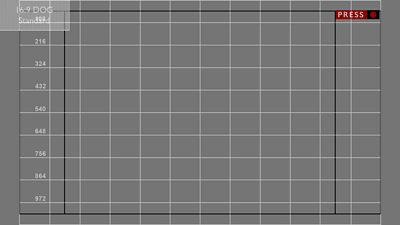
Branding for CBeebies and C±«Óătv inhouse
Download (dropbox) for editors and graphic designers. Please note users must have Adobe Photoshop CS6 software or later to access full package and must be used in accordance with the .
Caption safe area
The opening ±«Óătv logo and any captions within a programme must appear within the 16:9 caption safe area. The percentages shown are percentages of the 16:9 screen size.
Closing branding
C±«Óătv and CBeebies prefer closing credit sequences, this is where the credits run over the top of action in vision. If this is not appropriate for a particular show, closing credits should be centred within 4:3 caption safe area over an interesting background but not over plain black. All programmes will comply to the standard delivery documentation as outlined in the (dropbox).

|
Caption safe area |
Defined as (%) |
HD pixels (inclusive) First pixel numbered 1 |
TV line numbers (inclusive) Numbering as per âITU-R BT.709â |
|
16:9 caption safe |
90% of active width 90 % of active height |
96 â 1823 54 â 1025 |
48 to 533 (F1) and 611 to 1096 (F2) |
|
4:3 caption safe |
67.5% of active width 90 % of active height |
312 â 1607 54 â 1025 |
48 to 533 (F1) and 611 to 1096 (F2) |
The primary C±«Óătv logo must appear on the end-card for C±«Óătv programmes and the CBeebies logo must appear on the end-card for CBeebies programmes.
The production credit on the end-card will vary depending on the nature of the funding; please see the examples.
The end-card should be held for three seconds as part of your total programme duration. It should then be held for a further five seconds as a precautionary measure.
Producer or other credit should be centred horizontally above the logo.
Logos
C±«Óătv and CBeebies logos:
- must be centred at all times on the end-card
- must appear at a minimum size
- be aligned within the centre of the screen
In-house SPV - C±«Óătv
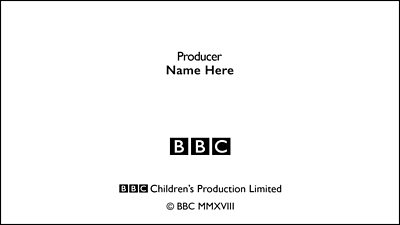
In-house SPV - CBeebies
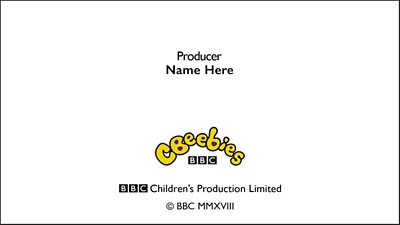
In-house non-SPV - C±«Óătv
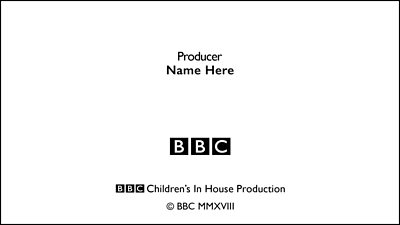
In-house non-SPV - CBeebies
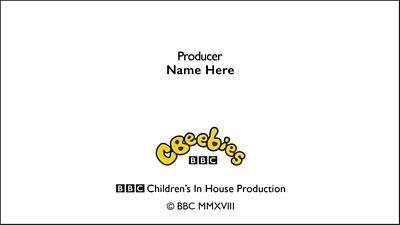
Independent producer joint promotion guidelines
Download the .
Joint promotions are marketing tools designed to promote two or more products simultaneously, usually by associating brands or products which will often belong to separate companies. These guidelines give advice on types of appropriate and inappropriate joint promotions.
Talent as executive producer policy
Download the
On-screen/on-air talent is playing an increasingly significant role in some ±«Óătv productions. The ±«Óătv has therefore reviewed its compliance processes for dealing with such productions, in particular looking at the role of executive producer.
Third party brand and design commercial guidelines
Access the .
Trade marks
Under the provisions of the Programme production agreement (PPA), certain distribution activities regarding the programme in the UK must carry the ±«Óătv logo (General term 16.2.4). If the production is licensing any of these rights to third parties the production is required to ensure that the third party enter into a Trade Mark Licence directly with the ±«Óătv for these purposes.
There is a streamlined process to enable this to be achieved.
Further information can be found in the Trade mark special terms and the Trade mark general terms.
Download the .
Download the .
Download the .
Download the .
Open University crediting, branding, endboards and call to action
See the OU production page for full information.